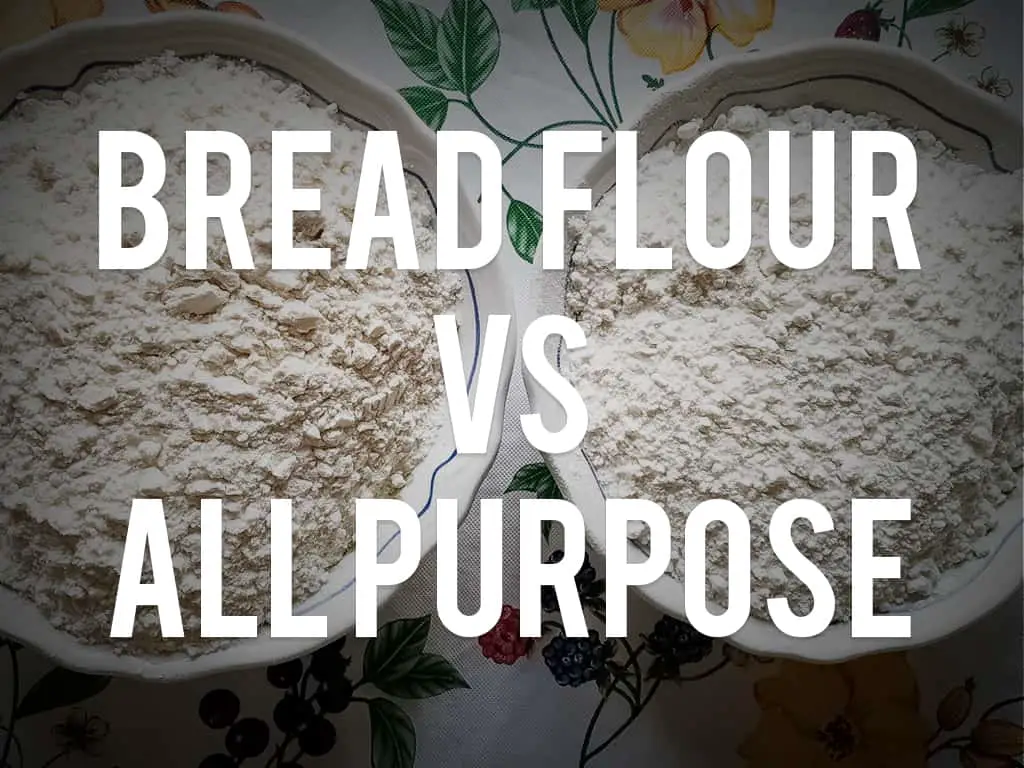This is a pretty common question around here, and for good reason. After all, it’s called bread flour. It seems pretty obvious that you would need it if you’re making bread. But, then again, it’s just flour. Shouldn’t you be able to use something other than bread flour?
In order to make bread, you do not need bread flour. What you need to make bread is flour with enough protein content to develop adequate levels of gluten. Gluten is what translates to much of the texture associated with leavened bread.
There are a handful of bread blends that have enough protein to produce a fine loaf of bread. All-purpose flour, ancient grains like Einkorn, and a whole host of whole-grain flour are great for making bread. But, there are a few things to keep in mind which will help you produce the best loaf possible regardless of the flour you’re using.
The Key is Gluten Development
Bread, in its many forms, is a balancing act with gluten development. In general, for a crumbly texture like a biscuit or to get a nice crisp bite in your pie crust you want less gluten development; but, for a chewy and fluffy texture that is typical of a loaf of bread, you want more gluten development. As a general starting point, the higher the protein count in your flour, the more gluten development you’ll have.
The amount of protein present is only the starting point though, as gluten development is impacted by factors like time and how much it is “worked” or mixed.
For example, taking a flour that is on the higher side of protein amounts, giving it a light mix without any kneading, and baking it immediately will result in a relatively crumbly and light texture (something like a biscuit). And the opposite is true, taking a flour with limited protein, mixing it vigorously, kneading it for an extended time, and letting it rest for hours will produce a less crumbly and more chewy texture (something like a roll). The chart below will express this idea a little better.
Common Protein Content Of Flour and Texture Expectations
| Protein | Biscuits | Rolls |
| ~14% | Harder to achieve the perfect texture, but working quickly and gently can get close. | Easy to produce a quality loaf of bread but easy to overwork and end up dense. |
| ~12% | Hard to achieve the perfect texture, but working quickly and gently can get it done. | Easier to produce a quality loaf of bread without much need to worry or fuss (very forgiving). |
| ~10% | Easy to achieve the perfect texture, working quickly and gently will ensure this happens. | Hard to produce a quality loaf of bread without much working and kneading of dough and use of binders. |
| ~8% | Easier to achieve the perfect texture, working gently will ensure this happens. | Harder to produce a quality loaf of bread, needing extensive working and might still produce a crumbly bread. |
If you’ve ever wondered why recipes suggest kneading rolls, but only lightly mixing biscuits, it comes down to gluten. As soon as we mix water into flour, gluten starts developing. The longer flour and water are together, the more gluten will develop.
For crumbly yet flaky textures we want to limit gluten development. We do that by working quickly and limiting how much we mix (mixing also encourages gluten development).
For bread, we want chewy and airy textures, which is produced by more gluten development. So we work it more, and give it a lot of time to develop.
And for the purposes of this topic, we use flour with higher protein levels to make gluten development easier. Additionally, if we don’t have enough or have too much protein content to start with, things just won’t turn out well.
Gluten Development Starts With Flour’s Protein Content
This is where bread flour comes into play, because it is a blend that is mixed to have the right range of protein to easily produce a chewy and light loaf of bread. This range falls about a percent over or under 12 percent.
Keep in mind though, having bread flour only makes it easier. It is not a necessity, and in fact, depending on your brand of flour there might literally be next to no difference in protein content. King Arthur AP flour, for example, has 11.7 percent protein. That is a fantastic number for making bread.
You will not see a drastic difference if you switch from King’s Ap to their bread flour, which is just a percent higher at 12.7 percent protein. To be clear, we prefer using it for sourdough, but like the versatility of their AP, and regularly bake bread with both.
However, you will see a drastic difference if you switch from using King Arthur AP to using a brand like White Lily that has, depending on the batch, just 7 percent protein.
At just 7 percent, you’ll make amazing scones, but it will be very hard to develop enough gluten to make a light and fluffy loaf of bread that is also chewy.
Shaping will also require very delicate hands with lower protein levels, unless you are adding ingredients to create an enriched bread, like a sandwich loaf. This has to do with those extra ingredients often being binding agents like oil or eggs, which helps in creating tension; which, then helps bread hold shape and rise during baking.
The Right Amount of Protein?
As we shared above, most bread flowers have around 12 percent protein. But we also shared it isn’t needed, for excellent bread. We consider any flour around 10 percent to be enough to develop a good finished loaf of bread, and don’t like getting above 13 percent as the results are a bit too dense and extra chewy. Too much gluten actually starts to work against the light and open texture a loaf of bread is best known for.
For us, we prefer a range between 11 and 13 percent. We find this to be a sweet spot for great loaves, rolls, sourdough, and many more commonly baked leavened breads.
Our preferred go-to flours, because they are priced well and easy to get (well, up until 2020 changed everything in the baking world), are King Arthur’s AP, and King Arthur’s Bread. We find their AP is the best all-around flour for the home baker who wants to make cookies and pastries as much as they want to make sourdough or rolls.
What’s With All The Different Flour Types?
We have another post, similar to this topic in which we discuss the differences between the two most common flours used for bread: AP and Bread Flour. We discuss a whole host of flour types and their purposes in that post near the end, jump on over there for a good reference point.


